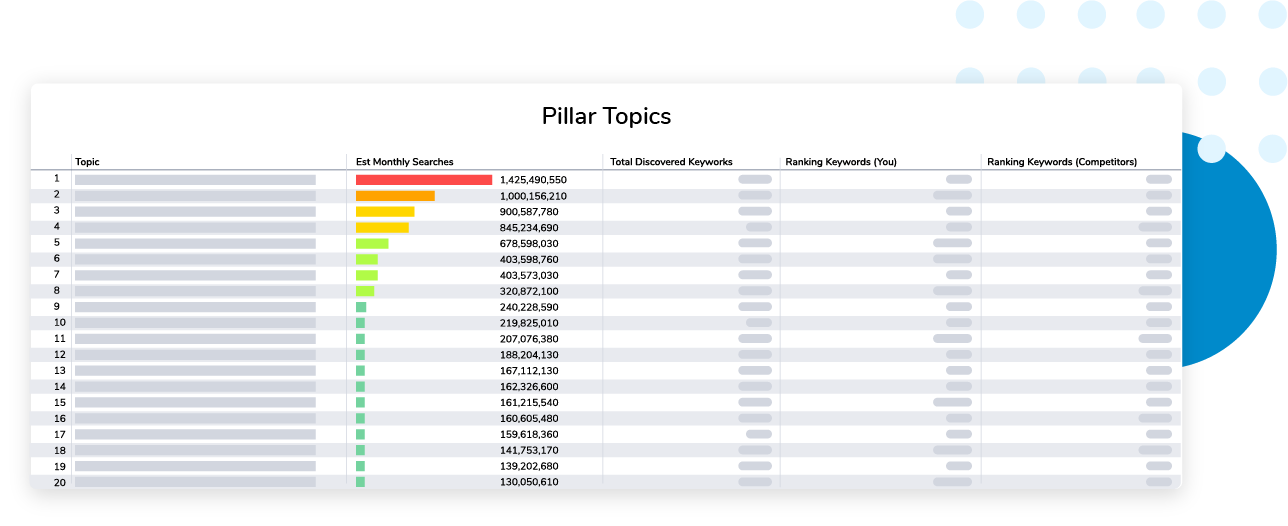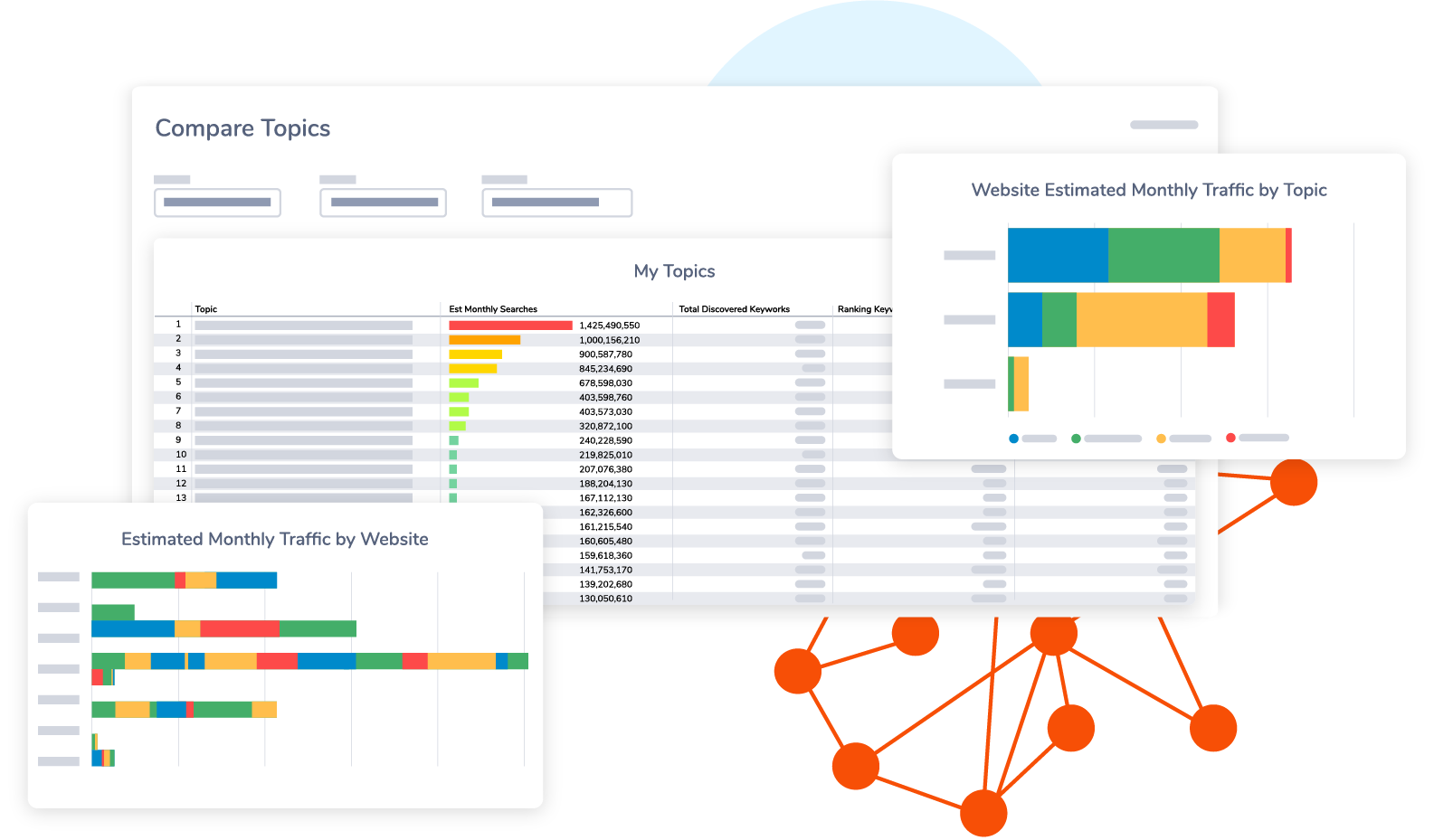Content Strategy
“Do blogs work?”
It’s a common question for marketers to face when pitching a new content marketing initiative to an executive. Though industry insiders know content marketing is nothing new, outsiders often oversimplify what is a rather complicated element of a working digital marketing strategy. They might break it down into the individual elements of a content strategy that are most visible, things like blogs. Before investing hard-earned profits into a new marketing initiative of any kind, key stakeholders outside of the marketing team will often ask questions like that one to better understand if writing some articles are actually worth the cost.
In reality, blogs really do work—if they’re a thoughtful part of a broader content strategy designed to provide your brand’s customers with valuable, engaging information at every step of their journey towards making a purchase of your brand. In a vacuum, the short answer to our original question is probably, “No.” Just publishing blog posts without any support from other key digital marketing tactics isn’t likely to result in a lot of growth for your brand. But with the right research and a holistic perspective on customers at different stages of their experience with your brand, blogs and social media posts and emails and the other content you produce can mean the difference between being found by your customers at the moment they need you the most—or being left in the dust by your competition.
Let’s unpack the sometimes-overwhelming topic of content strategy. What is it? Why do you need it? And most of all, how do you do it right? Here’s how to create a content strategy.
What Is Content Strategy and Why Do You Need It?
The term “content strategy” refers to the overall plan you have for the content your brand produces and publishes as part of your broader digital marketing efforts. Not to be confused with a “marketing strategy,” your content strategy is focused simply on the content that fuels digital marketing activity—the approach you take to generating content topics, creating content, publishing it, and promoting it to your audiences online. If you’re thinking that’s a lot of things to cover in a single strategy, it is. But when well thought out, a content strategy can give you a full recipe for everything content related, helping to guide you through the many complicated processes that have to work together to make your content matter.

Making content matter, in effect, is why you need a good content strategy. Think about it from the perspective of a consumer. Let’s say you’re looking to fix something in your house. Unless you’re a contractor or experienced in handiwork, you’ll probably take the same approach most modern homeowners do and head for a search engine. So you head online and search for the thing you need help with—“how to replace door handles in an old house,” for example. There’s a good chance the top results will be how-to videos on YouTube produced by manufacturers, contractors, or retailers ready to sell you something.
So, you click on the first video you see, produced by a national home improvement store. The video is helpful enough, but misses a big question you had. There’s no link to another video or article that dives deeper into the issue so you can explore further, so you move on to the next video you see—and it’s made by a competitor. The difference, though, is the competitor knows you might have more questions. They include a link in the video description to a written, step-by-step article that walks you through the process. That article contains links to many tools and products they sell that can help you accomplish your task.
The first video, while a good piece of content, did not have a broader content strategy that gives you everything you need to work your way to a purchase decision. That’s a lost sale for that retailer—but the retailer that connected other content and resources to the initial video you saw is far more likely to win your loyalty, and to be the one to sell you what you need to get the job done.
And that second video? It’s an example of what content can do when it’s part of a good strategy. No matter what you’re selling, or to who, you’ll need a comprehensive content strategy that guides consumers from first contact towards a goal—usually a generated lead or a sale.
What Is in a Content Strategy?
In order to lead to the results you want, a content strategy needs to include many elements—some written, some potentially unwritten. The unwritten parts of a content strategy may already exist for your brand as written parts of your broader marketing strategy. This includes basic things like marketing personas—examples of the customers you’re trying to reach—competitive research, basic pricing and product or service information, and more. These are the things that you need to understand implicitly before you can begin the hard work of crafting the written part of your content strategy.
So, how do you create a content strategy? A good content strategy typically covers four key components in their strategy, each of which need to be addressed before you can begin producing and publishing content that will move the needle:
Stakeholder Roster
There are many jobs to do in the work of content marketing which require many different types of professionals. Keeping a written record of exactly who will be handling which parts of your content strategy is a great way to make sure you haven’t left anything that will need to be figured out at the last minute. You may have an internal team that can take over some of these responsibilities, and you may need to work with agencies and contractors to handle others. Whatever specific combination ends up working for your brand, make sure you have a team that can take care of each of these duties:
- SEO research
- Copywriting
- Graphic design
- Social media management
- Email marketing management
- Website management (depending on the platform your website is built on, this might be a nontechnical role, or may require someone with a developer background)
- Marketing automation management
- Content review and approval
- Paid advertising
That last one—paid advertising—is a much bigger role than just content marketing. Typically, paid search and social media ads have a role to play outside of a brand’s content strategy. That said, paying to drive traffic to your content is an important tactic that can mean the difference between a content strategy that soars and one that sinks.
Consumer Insights
On the highest level of your content strategy, you’ll need an established procedure for generating the consumer insights you’ll need to better understand your audiences, where they spend their time online, and how you can best meet them where they are with your content. That’s where the SEO research job listed above comes into play; they’ll utilize the tools you choose to come up with direction for each content marketing campaign you execute. Most often, today’s marketers utilize keyword research tools and search engine marketing software that can give them a clear look at the keywords people use to look for the products and services they sell.

There are many of these tools available, and it can be overwhelming to figure out which ones you need. That’s why we created DemandJump—to give content marketers a one-stop-shop for gathering powerful consumer insights to fuel content strategies.
On a campaign level, your content strategy will include a standard procedure for completing consumer behavior research. Let’s say you adopt a monthly campaign pace; each month, your brand adopts a main overarching theme designed to explore one facet of your services or products, or designed to reach a specific type of marketing persona. That means each month, you’ll need a certain amount of information to work with when deciding on topics for individual content pieces. In turn, your creatives producing content will rely upon these consumer insights to make sure they’re writing about the right topics in the right ways.
Editorial Calendar
Just like your consumer insights research, your editorial calendar will work on a brand level and on a campaign level. Your content strategy should include a template for the kind of content you’ll want to produce on a monthly basis, including (but not necessarily limited to):
- Blog posts
- Social media posts
- Marketing emails
- Case studies
- Whitepapers
- Videos
- Podcasts
For example, you might decide that you’re publishing:
- Two blog posts every week
- One social media post on four different platforms three times per week
- One marketing email every week
- One new whitepaper each month
- Three new case studies in a month
- Video and podcast content as able
With that basic editorial framework built, you and your creatives will know exactly how many new topics and pieces of content they’ll need to build using consumer insights research in a given period of time. This is also where you’ll start putting that stakeholder roster into effect; with each piece of content, you’ll assign a stakeholder who is responsible for creative work, one for review and approval, and one to publish the content on your website, social profiles, or email marketing software.
Promotion Plan
Earlier, we mentioned the need for paid advertising as a component of your brand’s content strategy. The final component of your content strategy deals with how you’ll kickstart traffic to your new content using digital advertising platforms. On a brand level, you might set an overall promotion budget for each month—let’s say it’s $2,000. From there, you can work backwards to break that budget across different platforms and content pieces.
For example, you might focus on using Facebook and LinkedIn’s advertising platforms to target people likely to be your best customers and share important content pieces. So you know $1,000 each month will go to each platform. From there, you split it up based on your production schedule. Using our earlier example, it might look something like this on each platform:
- One set of ads promoting a new lead-generation whitepaper with a monthly budget of $200
- A budget of $100 for social posts sharing links to each of your twice-weekly blog posts
With the budget established from a high level, it enables you to match a budget to each social media post along with a stakeholder so they know exactly how much money they should spend “boosting” which posts when publishing.
Another key part of a promotion plan is developing your paid advertising audiences. While the stakeholder who handles your brand’s broader digital advertising efforts has their own saved custom audiences on LinkedIn and Facebook, the ones you build out for your content promotion might look different—maybe you want to reach individuals in a certain age group, or with certain interests, or in a certain geographic area. Take the time to build saved audiences on each of your chosen platforms that are likely to look like your ideal customers so whoever publishes and boosts the posts can simply select an audience from a list and move on.
There are many ways to approach a content strategy, but this content strategy framework will give you a blueprint to follow to make sure you’re considering every tactic and job that needs to be done in order to produce content at every stage of the customer journey.

Content Strategy Example
Okay, so what does all of this actually look like in action? It might be helpful to imagine a specific content strategy example to understand what the finished product may become for your brand. Let’s explore a business-to-consumer (B2C) content strategy by continuing our home improvement example from earlier. We’ll think about this in terms of a specific content campaign.
Stakeholder Roster
Our major home improvement retailer has a mid-sized marketing team complete with creatives and strategists alike, and also works with a few agencies:
- Two internal copywriters, who write content for all platforms
- One internal graphic designer, who creates all custom graphics for blogs and social posts, and also lays out finished how-to guides
- One internal content marketing manager, who performs consumer insights research and
- One external web development agency, who integrates lead generation forms, email marketing, and other necessary elements on the brand’s website
- One external video production agency, who produces all branded videos
Consumer Insights
Using DemandJump, the brand’s content marketing manager performs a search for “door handle replacement” to learn the top phrases and questions people enter into search engines surrounding the topic. They also review the competitor websites that are ranking for those terms in order to better understand what content already exists around this topic so they can better prepare the editorial calendar to outperform competitor content.
Editorial Calendar
Using the consumer insights, the content marketing manager comes up with eight blog post topics, a how-to guide topic, direction for a four-week email series, and a short series of videos on door handle repair and replacement. The copywriters, graphic designer, and video production agency get to work on the necessary creative to fill the editorial calendar while the web development agency builds a new door handle replacement landing page complete with links to products and a form to download the how-to guide, which adds new leads to the brand’s email list for the email series.
Promotion Plan
Finally, the content marketing strategist determines a $5,000 promotion budget for this campaign. About half of the budget, $2,400, goes to search engine pay-per-click (PPC) ads that send users directly to the door handle replacement landing page. The remaining $2,600 is used on Facebook, split across ads sharing the how-to guide, video, and the eight blog posts.
Keep in mind that every brand is different, and so, too, is every content strategy. If you work for a business-to-business (B2B) brand that offers professional services, you may opt for LinkedIn over Facebook. Instead of a how-to guide and product listings, your landing page might be focused solely on generating leads using a whitepaper that offers practical value that solves just one of the problems you typically help your customers solve. Adapt your content strategy to create the kinds of experiences you want your customers to have, and make it as easy as possible for your online audiences to find you through plenty of good, SEO-rich blog posts, visible social media posts, emails, and more.
Superpower Your Content Strategy with DemandJump
The beating heart at the center of any effective content strategy is data. The more you know about your ideal customers and their habits online, the better prepared you’ll be to produce the kind of content that they’ll find, appreciate, and trust enough to consider making a purchase with your brand. Before you put pen to figurative paper and begin plotting your brand’s next big content strategy, make sure you have the absolute best data available—the kind afforded by DemandJump’s revolutionary consumer insights platform.
With DemandJump, you can take the guesswork out of content strategy by getting a close look at how your ideal customers are talking about topics related to your brand online. Learn the top keywords and questions your audiences use to search for solutions to their problems. Get a lay of the competitive land with a behind-the-curtain peek at how your top competitors rank on search engine results for those phrases, and learn which websites your customers visit most on the way to making a purchase. And once your content strategy is in effect, see how your audiences move through each of your digital platforms—your website, your digital ads, social media pages, and more—to once and for all give the executive asking you if these blogs really work a clear answer.
Sign up for a free DemandJump trial today and see it in action for yourself.















